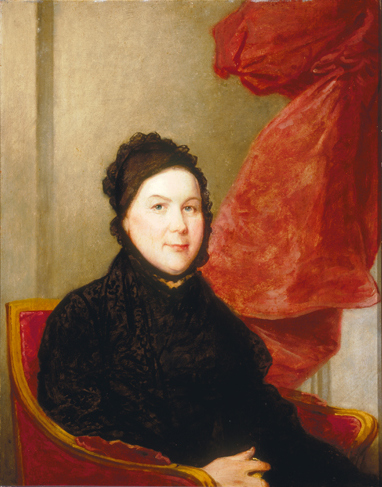Who Served Here?
General Nathanael Greene

Nathanael Greene
Charles Wilson Peale, 1783
Nathanael Greene was born August 7, 1742 in Warwick, Rhode Island. The Greene family was among the earliest settlers in Rhode Island and had helped establish the colony in the 1630s. The Greenes were devout Quakers and his ancestor, John Greene Sr., settled in Rhode Island after conflict with the Puritans drove him from the Massachusetts Bay Colony.
Greene was an avid reader, eventually acquiring a large library. His father purchased a mill in Coventry for Nathanael to manage. He took an active part in community affairs and helped establish the first public school in Coventry. He also added books on military science to his library which he studied diligently.
This passion eventually drew disapproval from the uncompromisingly pacifistic Quaker church. When Greene attended a military parade and showed support for armed rebellion against England, he was expelled from his church. Greene remained a devout Quaker for the rest of his life, and struggled to reconcile Quaker admonitions against warfare under any circumstances with his support for and participation in the War for American Independence.

Portrait of Catherine Littlefield Greene
James Frothingham (attrib), 1809
In 1770, Nathanael was elected to the General Assembly of Rhode Island. Within a few years, tensions between England and the colonies were already running high, and Greene helped organize a local militia group known as the Kentish Guards. In July, 1774, Greene married Catharine Littlefield (1755-1814), a union that produced six children over the course of a dozen years, until Nathanael's untimely death.
When the news of the battles of Lexington and Concord reached Rhode Island, Greene was one of four men in his community who hurried to Boston to offer his services. Back in Rhode Island, the General Assembly ordered a force of 1,600 men to be called into the service and Nathanael Greene was made commander with the rank of Major-General. In June 1775 he had his troops in position around Boston.
The Continental Congress appointed Washington Commander-in-Chief on June 19, 1775. The new top general met Greene in Boston in July, and the two men began a lifelong frindship.
It would be necessary to realize that the struggle was national in character and scope and not local or provincial. Later Greene and his troops were ordered to Long Island to drive off the British if they attacked that area. Late in the summer of 1776 the British attacked the Americans around New York when the Americans were obliged to retreat. During this period Greene was made a Major-General. At Christmas time, 1776 and early in the New Year at Princeton, under the leadership of Washington two fine victories were won, diminishing British strength in New Jersey. American morale was restored.
Washington was not in a position to attack the British because of a smaller army and a lack of necessary supplies. Late in the summer Washington moved his troops below Wilmington and invited an attack from the combined British forces under Howe. But they did not desire to open a frontal attack upon Washington. Finally Washington met the British and Hessian soldiers in the Battle of Brandywine on September 11, 1777, southeastern Pennsylvania, and in the closing hours of the struggle Greene rendered conspicuous service by his indomitable courage. Again on October 3, 1777 with the British in possession of Philadelphia, Washington proposed an audacious attack upon the enemy forces at Germantown, Philadelphia. The British prevailed but realized that Washington was far from being a conquered man.
The continental army went into winter quarters at Valley Forge on December 19, 1777. The need of supplies of all kinds was evident from the beginning of camp. In order to secure food Washington appointed Greene to look after it. Finally, he appointed Greene Quartermaster-General. He was loathe to accept it, because he wanted to be in active service which Washington assured him he could have when the occasion would arise. Washington posted in the order of the day for March 24, 1778, the following statement:
"The Honourable Continental Congress have been pleased to appoint Major-General Greene, Quartermaster-General in the army of the United States — reserving his rank of Major-General in the same."



